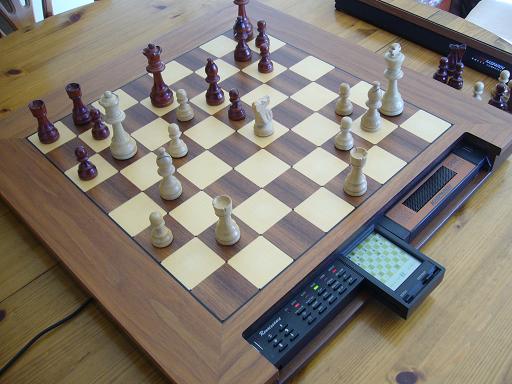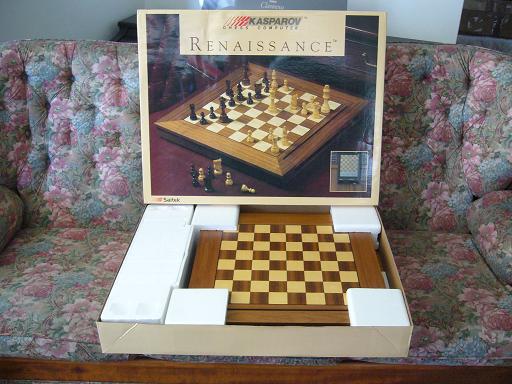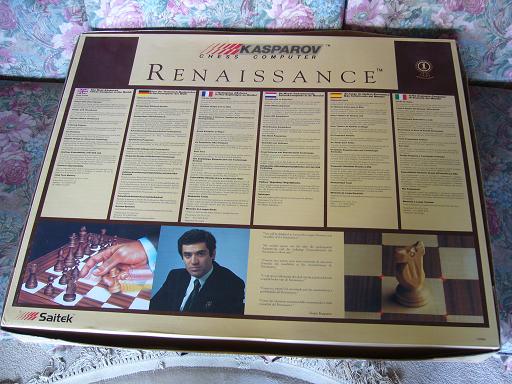|
The Renaissance board has beautiful clean lines. There is a generous uncluttered margin around the board. The 81 small LEDs recessed in the corner of each square are an aesthetic improvement on the 64, one per square, LEDs which intrude into the appearance of most auto sensory boards. If the chess piece set was larger, heavier and more finely carved it would be perfect. The advantages of the Renaissance board do not stop with looks. The board gives a wealth of options accessed through the keypad and the LCD chessboard is also a major benefit.
The Renaissance was released in 1989 at a relatively modest price. All it lacked was a strong chess program. The standard program installed in the machine was much weaker than seemed appropriate for the class of board at 1514 Elo (Wiki). Whilst various modules were produced with much stronger programs none of them challenged the strongest chess computers of the day.
So in early 1990, after Mephisto had acquired Fidelity, the Fidelity programmers Dan & Kathe Spracklen moved to Saitek . Their mission was to produce a top class program for the Renaissance board. cont >
|



